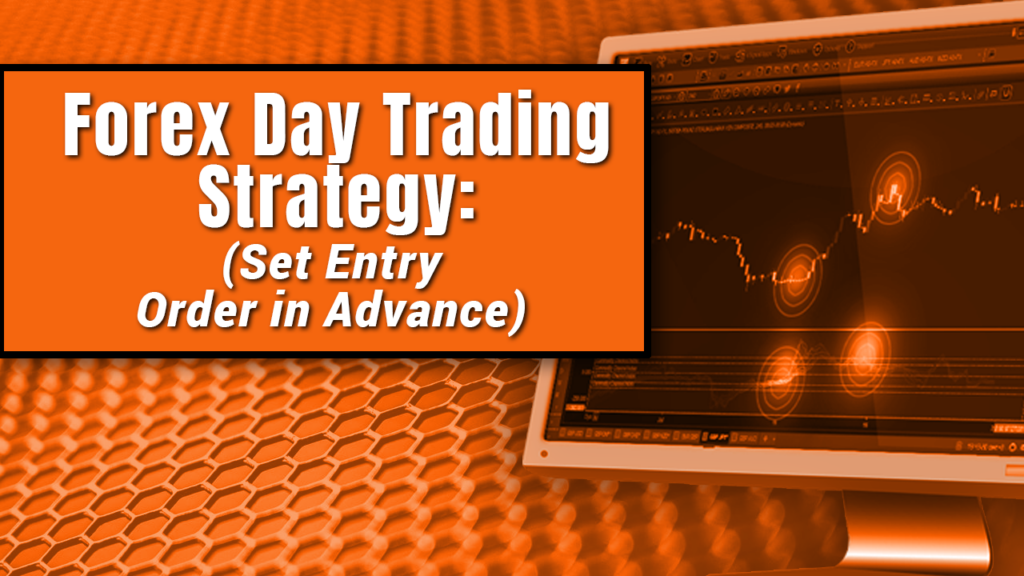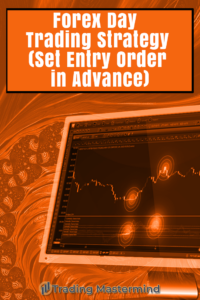Today, I am going to demonstrate how to have the most ideal day trading or swing trading entry order strategy that you can set up in advance looking at charts say twice per day and then leave it alone and go on about your day (or sleep at night) and come back later to discover if your trades were triggered by your entry orders and then take the next step to plan your exit if it is intended to keep running longer.
Or if your exit target or take profit was already hit, you will just come back and see you have profit and start setting up the next trade. It’s truly amazing, brilliant and a sweet way to trade. Convenient and doable. This is a skill that solves the main challenge of so many traders that I have talked with, and that’s why it’s critical that I show you how this works. This works for Gold, Forex currency pairs, stocks, and futures and digital currencies. Once you master it you’re going to love it. So let’s do it now.
In today’s busy world where many people work long hours and have many activities that keep them busy all the time, many traders are able to manage their trading business and balance their lifestyle requirements. We all have requirements of time management.
What I’m about to show you today is how to set up entry orders in advance of the next market move so that you can do your analysis say, twice per day and then go on about your other business for the rest of the day and come back later and find out if the trade was triggered.
Now I have seen most people are interested in ways of trading that don’t require them to actually read charts but instead just get in based on some support and resistance set up. It’s like trying to shoot the side of a barn blindfolded. Occasionally you might hit the target and get some profit but this method is for people who really want to have a legitimate trading skill but don’t have the time to stay in front of their computers for many hours per day. If you’re looking for a way to grab pips without knowing how to read the market and without developing a legitimate skill in reading charts, this is not going to help you.
So the challenge of missing entries is almost universally experienced by all of us at some time or another because no one can monitor their charts non stop without ever stepping away from their computer. The way that I have always overcome this challenge of time management in trading is by knowing the times of day when entries form. Once you realize this you can see that entries form at the same times and usually most of them happen at scheduled news events that are shown on the news calendar. So now I know when the market moves or forms entries because I’ve seen it and every day I check and notice what time the market formed an entry. It’s no secret when these happen and anyone can see it on their charts if they look and pay attention.
And it’s no secret that around 70% of entries happen in the first part of the European and London session. But is it also understandable and no wonder that many people, especially in the U.S., are not able to trade at that time and still maintain a healthy lifestyle due to the natural biological need to sleep at night. And even in other parts of the world whether in the U.K. Europe, Australia everyone has some challenges with the trading business and the amount of time needed in front of the computer to execute the trades.
Even though we know in advance what time trades are likely to happen, it’s just not feasible for many people to be actively trading at those times every day.
So in order to do this strategy, you still need to have the ability to read charts and that takes time and practice. If you are committed to being a professional trader not looking for a way to avoid having trading skill with some kind of support and resistance strategy designed for monkeys to trade then with this strategy you can be a professional who knows the intimate details of chart reading but only look at charts for 15-30 minutes twice a day at whatever time is convenient for you.
So I’ve always told people be here at this time because that’s the time when the next trade will likely happen. But not everyone can always be there at the times of day when the next trade will happen and many people tell me that they work many hours per week and cannot spend the time sitting in front of a computer waiting to see an entry or waiting to see the right signal to exit.
What brought this strategy to my attention is that several traders in our community have been doing this for several years while having full-time jobs. And just recently two of our members demonstrated how they use their skill to determine how to set up entry orders like buy limit, buy stop, sell limit, and sell stop as a part of the trading strategy.
One gentleman, Errol has been using this regularly for several years to solve the problem of working long hours plus commute time. As a result, if things go well, he may soon no longer need to keep working in the future.
So here is how you do it.
Every day you will still need to go through the process of analyzing each currency pair in each group of related pairs comparing patterns on these related pairs and searching for clarity as usual. That’s the same that we would always do.
Once you know what the next trade will be as we always identify all trades long in advance, you can use your skill to determine how you would set up an entry order to put you into the trade in the best most accurate way possible without actually seeing the trade happening at the time.
Let’s look at exactly how this is done and we’ll use Gold as the example.
First I will go to the monthly and analyze this time frame and determine the next entry for the monthly. Since the weekly and monthly are so long of a time frame the tendency is to want to skip it and just go directly to the shorter time frames.
The point is it takes 1 to 5 seconds and if you develop a habit of NOT doing it you will discover many mistakes that you would have been aware of if you had taken the extra 5 seconds to look at the longer time frames.
By no means would any trader who understands markets have an intention of trading only in the direction of all longer time frames. That would be stupid. When the daily forms a correction it can last several months and the weekly and monthly even longer like years of corrections so trading in that direction is not the purpose. The idea of trading in the direction of all longer time frames is just completely stupid and not based on any understanding of natural market cycles.
In this process, of course, you will determine the next trade on every time frame and have a plan for identifying the entry for every time frame as we normally do.
Once you decide which pair looks best for the next entry set up the appropriate buy limit, buy stop, sell limit, or sell stop. In most cases, you may also choose to use a trailing buy or sell limit as the market moves into a proper position to complete the pattern.
So the ideal set up would be based on the expectation for a continuation of a trend on the 1-4 hour time frame because that is something that can be done with these order setups.
These are best set up on the 1-4 hour range although you can set them up on shorter time frames. And these are best for swing trades but also for day trades that are closed within a few hours either automatically with taking profit or manually when you assess the trade once you get back to your computer.
So every day you read the charts determine what the next entry will be and then set up an automated order to get you into the trade.
Now to find out more about what really works in trading whether you enter trades manually or use entry orders, just go to www.tradingmastermind.com
And you if you want to see more about how that works you can watch this video right over here.


